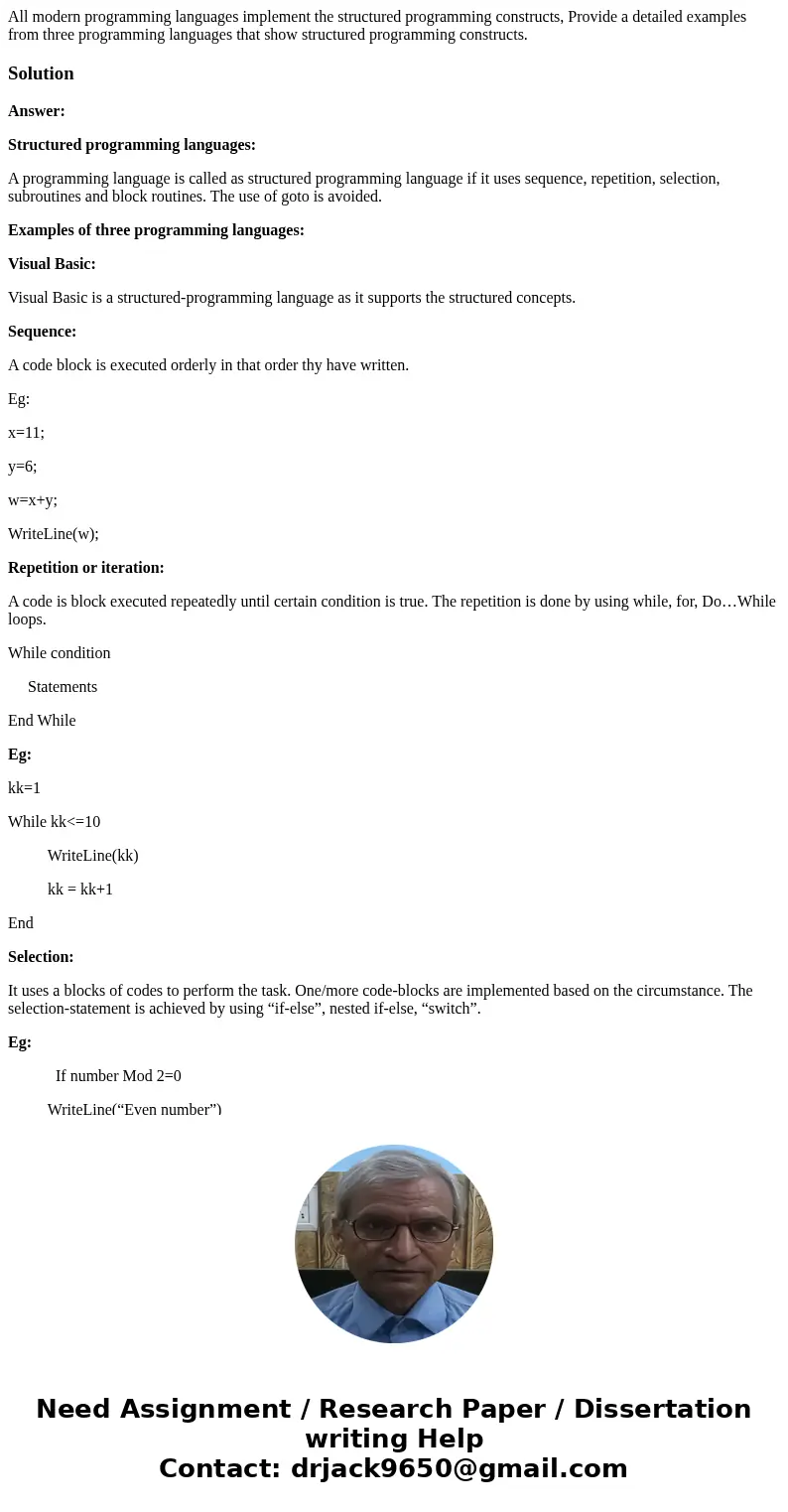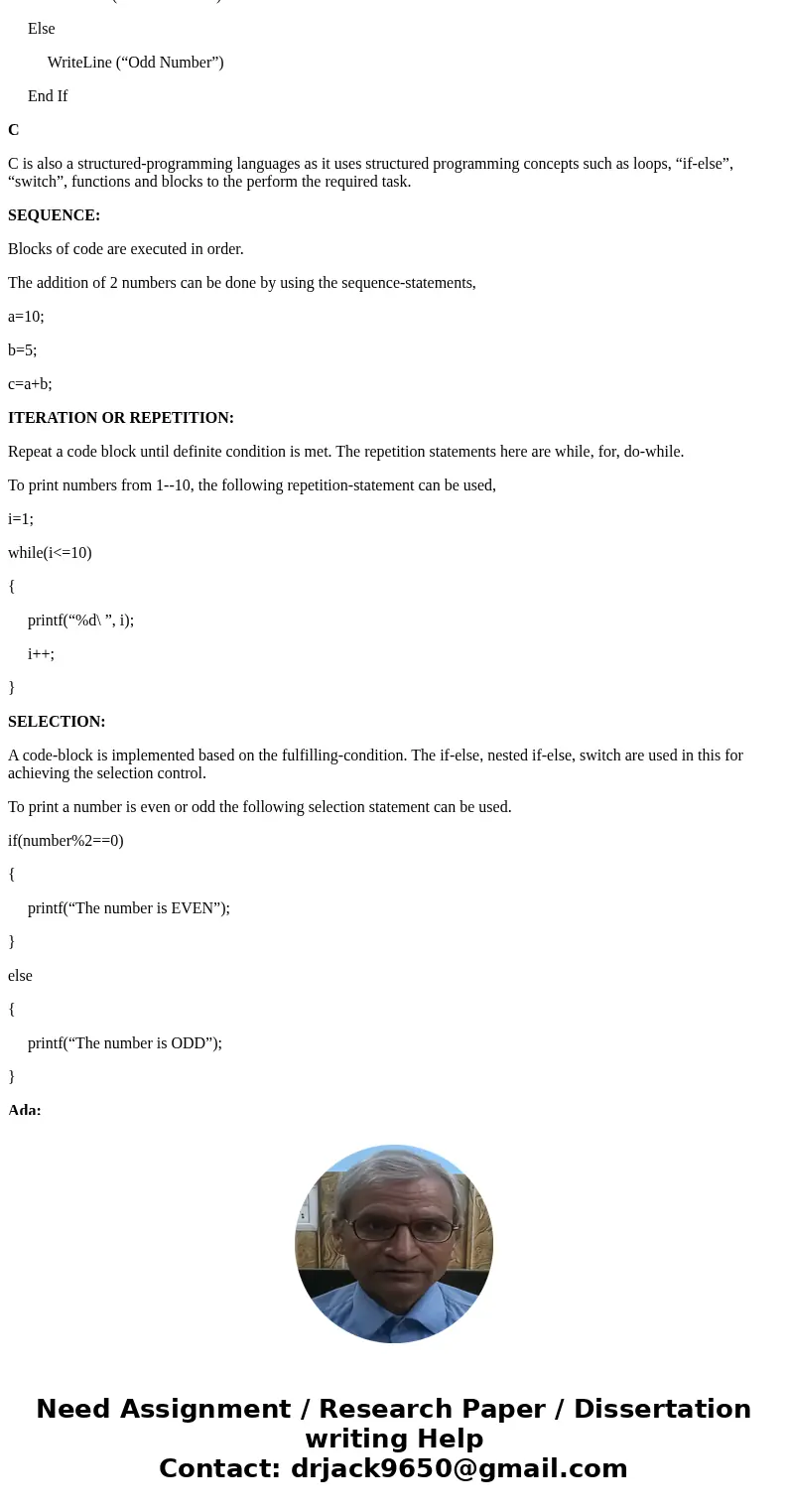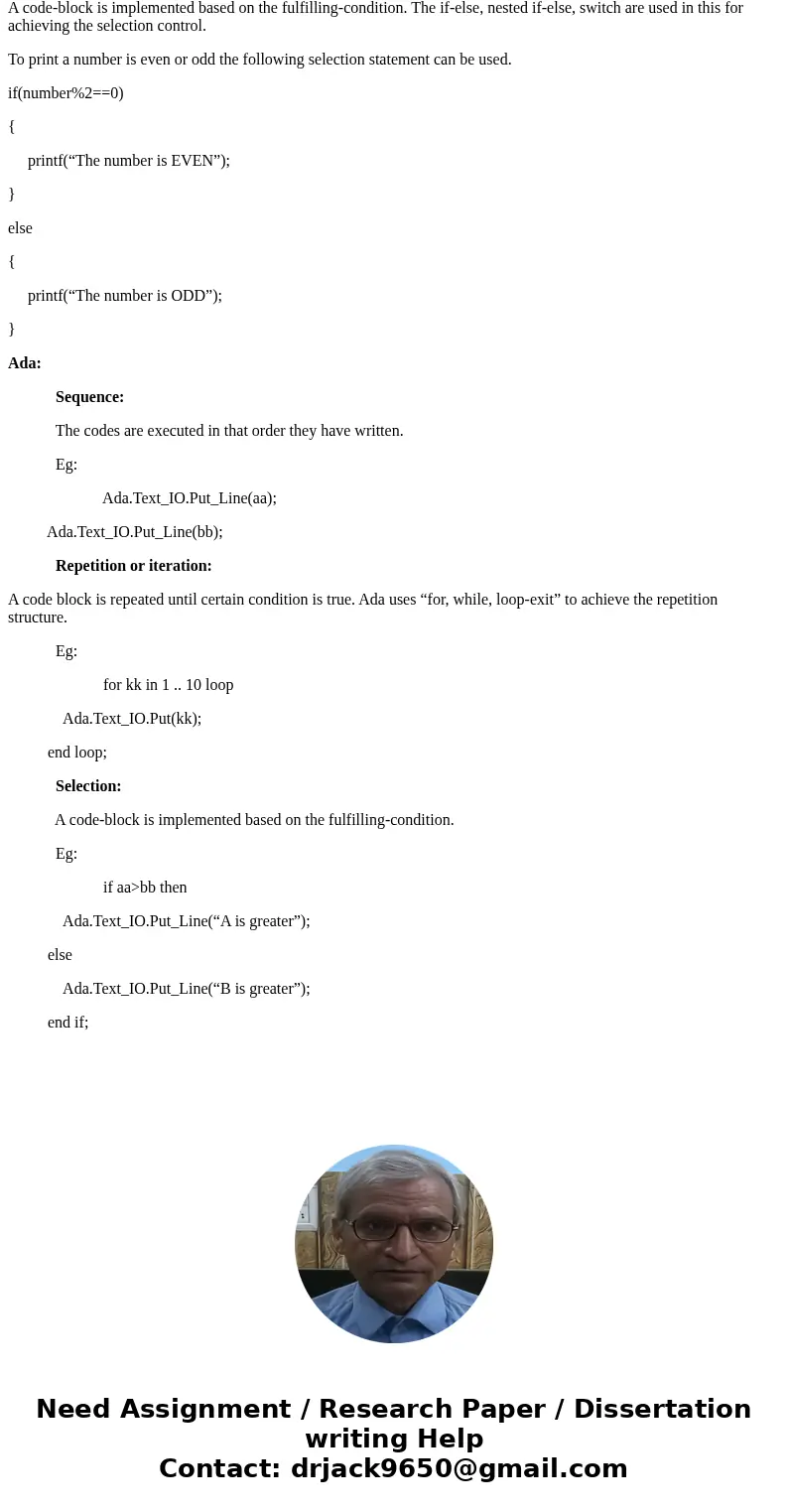All modern programming languages implement the structured pr
All modern programming languages implement the structured programming constructs, Provide a detailed examples from three programming languages that show structured programming constructs.
Solution
Answer:
Structured programming languages:
A programming language is called as structured programming language if it uses sequence, repetition, selection, subroutines and block routines. The use of goto is avoided.
Examples of three programming languages:
Visual Basic:
Visual Basic is a structured-programming language as it supports the structured concepts.
Sequence:
A code block is executed orderly in that order thy have written.
Eg:
x=11;
y=6;
w=x+y;
WriteLine(w);
Repetition or iteration:
A code is block executed repeatedly until certain condition is true. The repetition is done by using while, for, Do…While loops.
While condition
Statements
End While
Eg:
kk=1
While kk<=10
WriteLine(kk)
kk = kk+1
End
Selection:
It uses a blocks of codes to perform the task. One/more code-blocks are implemented based on the circumstance. The selection-statement is achieved by using “if-else”, nested if-else, “switch”.
Eg:
If number Mod 2=0
WriteLine(“Even number”)
Else
WriteLine (“Odd Number”)
End If
C
C is also a structured-programming languages as it uses structured programming concepts such as loops, “if-else”, “switch”, functions and blocks to the perform the required task.
SEQUENCE:
Blocks of code are executed in order.
The addition of 2 numbers can be done by using the sequence-statements,
a=10;
b=5;
c=a+b;
ITERATION OR REPETITION:
Repeat a code block until definite condition is met. The repetition statements here are while, for, do-while.
To print numbers from 1--10, the following repetition-statement can be used,
i=1;
while(i<=10)
{
printf(“%d\ ”, i);
i++;
}
SELECTION:
A code-block is implemented based on the fulfilling-condition. The if-else, nested if-else, switch are used in this for achieving the selection control.
To print a number is even or odd the following selection statement can be used.
if(number%2==0)
{
printf(“The number is EVEN”);
}
else
{
printf(“The number is ODD”);
}
Ada:
Sequence:
The codes are executed in that order they have written.
Eg:
Ada.Text_IO.Put_Line(aa);
Ada.Text_IO.Put_Line(bb);
Repetition or iteration:
A code block is repeated until certain condition is true. Ada uses “for, while, loop-exit” to achieve the repetition structure.
Eg:
for kk in 1 .. 10 loop
Ada.Text_IO.Put(kk);
end loop;
Selection:
A code-block is implemented based on the fulfilling-condition.
Eg:
if aa>bb then
Ada.Text_IO.Put_Line(“A is greater”);
else
Ada.Text_IO.Put_Line(“B is greater”);
end if;



 Homework Sourse
Homework Sourse